Ke Yin
Fair Beam Synthesis and Suppression via Transmissive Reconfigurable Intelligent Surfaces
Nov 04, 2024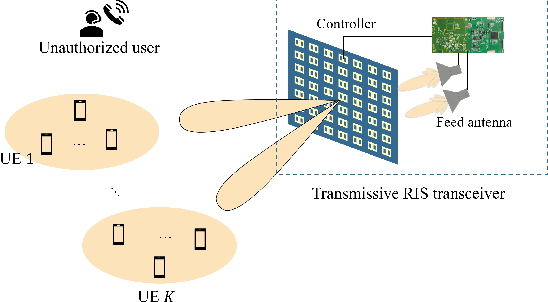
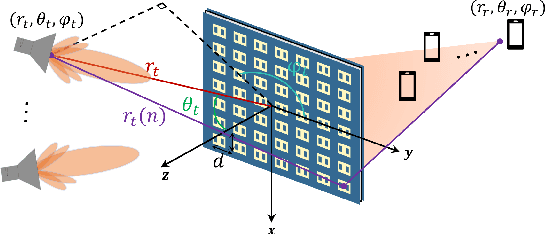
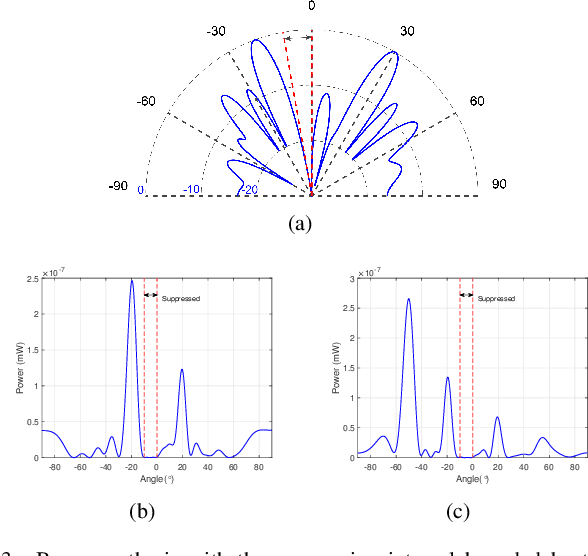
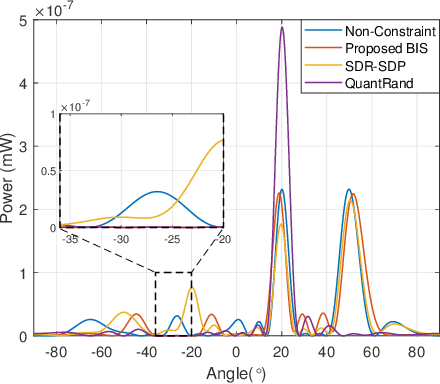
Abstract:Existing phase optimization methods in reconfigurable intelligent surfaces (RISs) face significant challenges in achieving flexible beam synthesis, especially for directional beam suppression. This paper introduces a Max-min criterion incorporating non-linear constraints, utilizing optimization techniques to enable multi-beam enhancement and suppression via transmissive RISs. A realistic model grounded in geometrical optics is first presented to characterize the input/output behavior of transmissive RIS, effectively linking explicit beam-forming operations with practical implementation. Subsequently, a highly efficient bisection-based algorithm for constrained Max-min optimization involving quadratic forms is developed, utilizing an auxiliary variable and Moreau envelope to iteratively reach the optimal solution. This approach demonstrates excellent extensibility and is applicable to a wide range of constrained Max-min problems. Numerical simulations validate the proposed methods, confirming that the framework enables beam enhancement or suppression at designated spatial positions.
Optimal Beamforming of RIS-Aided Wireless Communications: An Alternating Inner Product Maximization Approach
May 10, 2024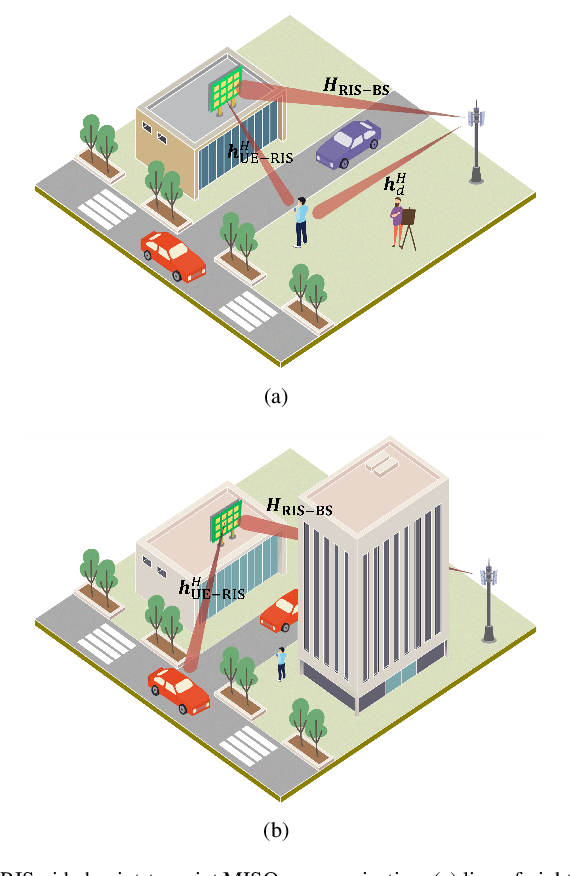
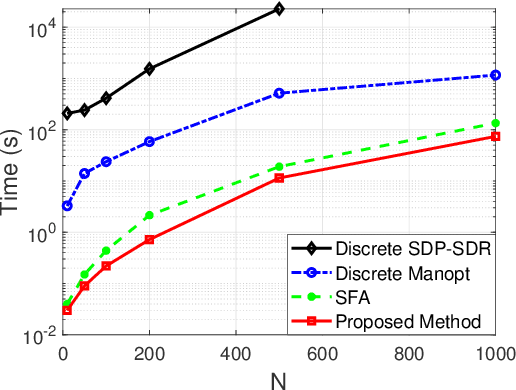
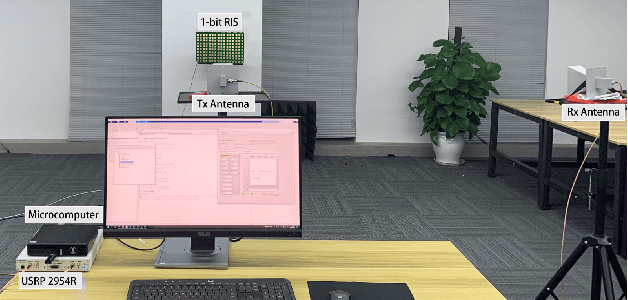
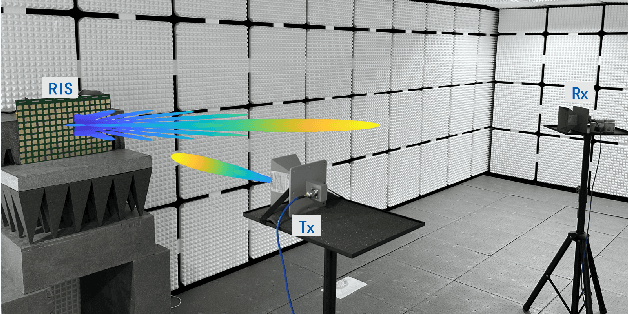
Abstract:This paper investigates a general discrete $\ell_p$-norm maximization problem, with the power enhancement at steering directions through reconfigurable intelligent surfaces (RISs) as an instance. We propose a mathematically concise iterative framework composed of alternating inner product maximizations, well-suited for addressing $\ell_1$- and $\ell_2$-norm maximizations with either discrete or continuous uni-modular variable constraints. The iteration is proven to be monotonically non-decreasing. Moreover, this framework exhibits a distinctive capability to mitigate performance degradation due to discrete quantization, establishing it as the first post-rounding lifting approach applicable to any algorithm intended for the continuous solution. Additionally, as an integral component of the alternating iterations framework, we present a divide-and-sort (DaS) method to tackle the discrete inner product maximization problem. In the realm of $\ell_\infty$-norm maximization with discrete uni-modular constraints, the DaS ensures the identification of the global optimum with polynomial search complexity. We validate the effectiveness of the alternating inner product maximization framework in beamforming through RISs using both numerical experiments and field trials on prototypes. The results demonstrate that the proposed approach achieves higher power enhancement and outperforms other competitors. Finally, we show that discrete phase configurations with moderate quantization bits (e.g., 4-bit) exhibit comparable performance to continuous configurations in terms of power gains.
Hiformer: Heterogeneous Feature Interactions Learning with Transformers for Recommender Systems
Nov 10, 2023



Abstract:Learning feature interaction is the critical backbone to building recommender systems. In web-scale applications, learning feature interaction is extremely challenging due to the sparse and large input feature space; meanwhile, manually crafting effective feature interactions is infeasible because of the exponential solution space. We propose to leverage a Transformer-based architecture with attention layers to automatically capture feature interactions. Transformer architectures have witnessed great success in many domains, such as natural language processing and computer vision. However, there has not been much adoption of Transformer architecture for feature interaction modeling in industry. We aim at closing the gap. We identify two key challenges for applying the vanilla Transformer architecture to web-scale recommender systems: (1) Transformer architecture fails to capture the heterogeneous feature interactions in the self-attention layer; (2) The serving latency of Transformer architecture might be too high to be deployed in web-scale recommender systems. We first propose a heterogeneous self-attention layer, which is a simple yet effective modification to the self-attention layer in Transformer, to take into account the heterogeneity of feature interactions. We then introduce \textsc{Hiformer} (\textbf{H}eterogeneous \textbf{I}nteraction Trans\textbf{former}) to further improve the model expressiveness. With low-rank approximation and model pruning, \hiformer enjoys fast inference for online deployment. Extensive offline experiment results corroborates the effectiveness and efficiency of the \textsc{Hiformer} model. We have successfully deployed the \textsc{Hiformer} model to a real world large scale App ranking model at Google Play, with significant improvement in key engagement metrics (up to +2.66\%).
New region force for variational models in image segmentation and high dimensional data clustering
Apr 26, 2017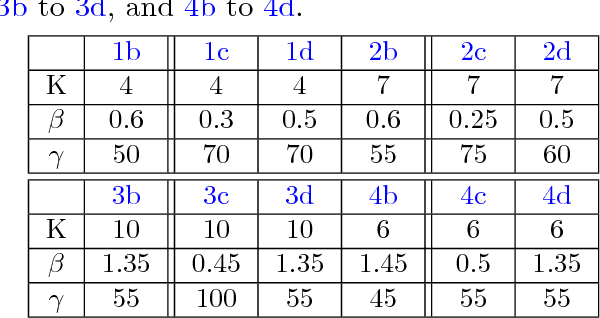
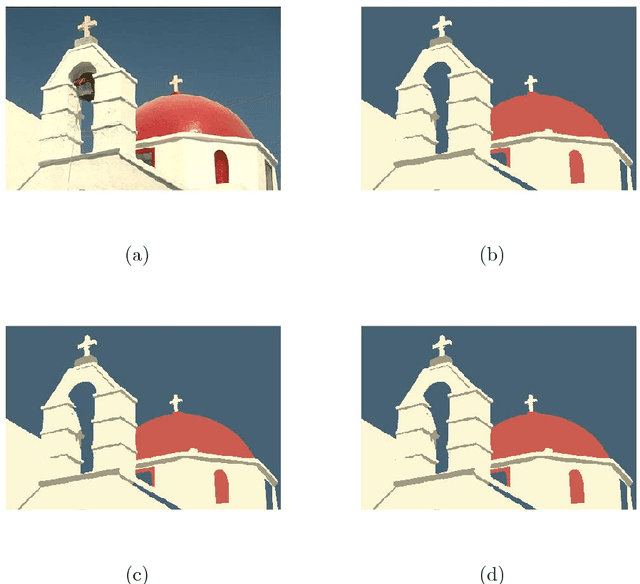
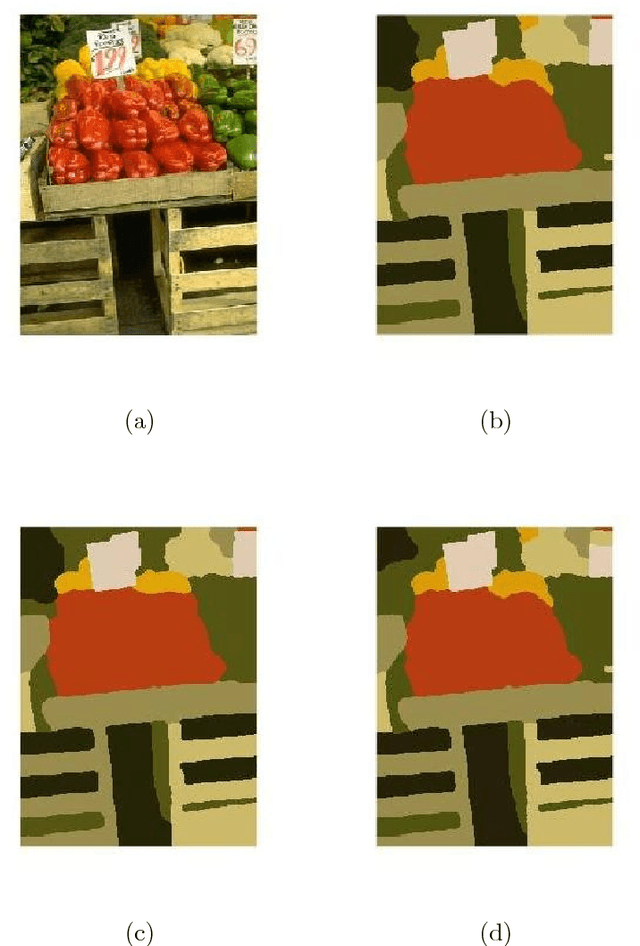
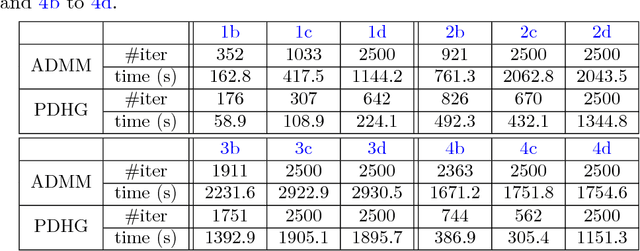
Abstract:We propose an effective framework for multi-phase image segmentation and semi-supervised data clustering by introducing a novel region force term into the Potts model. Assume the probability that a pixel or a data point belongs to each class is known a priori. We show that the corresponding indicator function obeys the Bernoulli distribution and the new region force function can be computed as the negative log-likelihood function under the Bernoulli distribution. We solve the Potts model by the primal-dual hybrid gradient method and the augmented Lagrangian method, which are based on two different dual problems of the same primal problem. Empirical evaluations of the Potts model with the new region force function on benchmark problems show that it is competitive with existing variational methods in both image segmentation and semi-supervised data clustering.
 Add to Chrome
Add to Chrome Add to Firefox
Add to Firefox Add to Edge
Add to Edge